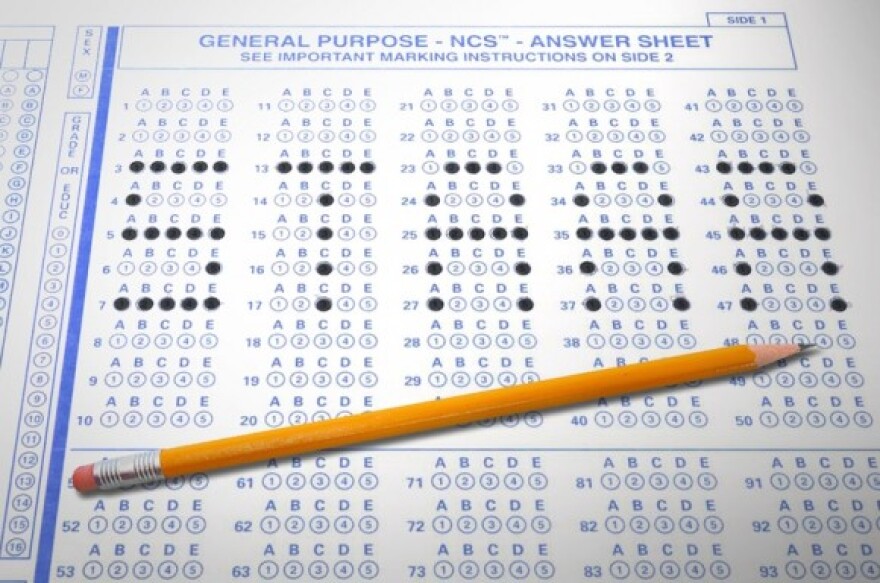STAAR test results released last week show minimal gains compared to 2012. It was the second year students took the new standardized tests, which teachers and administrators say are more rigorous.
The state decided to phase in the grading standards, gradually increasing the number of questions students must answer correctly until 2016, when the final standards will be implemented. That means right now, students are being graded at a lower standard.
“Statewide, we’re all trying to grapple with this new, more difficult test that has very many standards," says Bill Caritj, the chief performance officer at Austin Independent School District.
A majority of AISD students in grades three through eight passed the tests. 79 percent of students passed the reading test and 77 percent passed the math test. But if the students were being graded based on the final standards, 45 percent would've passed the reading test. 41 percent would've passed math.
“That speaks to the fact that the test is very difficult, it’s assessing standards that are much more rigorous and taking districts a little bit of time to get up to speed. I think our results show we’re making progress. Clearly we need to focus more on writing and the areas that are moving more slowly," Caritj says.
69 percent of students passed the writing test, based on phase in standards. Only 35 percent passed based on the final STAAR test standards.
This year, eighth grade students only had to answer 39 percent of the questions correctly to pass the standardized math test. While the specific percentage needed to pass a STAAR test depends on the subject, all of the passing standards for the 2012-2013 school year were below 60 percent.
“Folks in general see passing as a 60 or 70 percent threshold, but the metrics used to figure out what passing or being commended, it’s a mystery. People don’t know what it is. There’s not a lot of transparency on how it’s graded. Each grade levels or core areas could have a different passing percentage that equals passing, but passing doesn’t equal 70 percent," says Ken Zarifis with Education Austin.
“So it becomes confusing, what does this word 'passing' even mean?" he says.
When the final standards are implemented, eighth graders will have to answer 87 percent of the questions correctly to pass the math STAAR test.
Zarifis says while the standards are low now, eventually they'll get too high.
“They are wonderful goals, but they are not realistic numbers. I’d much rather live in a world of reality than a world of fantasy when it comes to assessment and kids," he says.
Susanne Burke with AISD says teachers are meeting this week for it’s annual evaluation of the district’s curriculum.
"So, if we see a sequence or objective where students may be struggling perhaps we need to intro it earlier in the year, so we can spiral it through the curriculum as well. Perhaps we need more time on that particular standard," Burke said at a presser last week.
Burke says the district doesn’t teach to the test. But Zarifis with Education Austin says the high standards of the STAAR tests will change that.
“This will push districts to push principals, principals to push teachers, for teachers to push kids, to hit their 90 percent. We are going to be so singularly focused on the test score that will effectively give up what it means to truly teach and learn," Zarifis says.
Next year, STAAR test standards will become a bit more rigorous.
Texas Education Agency Spokesperson DeEtta Culbertson says the high passing standards ensure students are ready for college.
“We determined that these passing standards would be set where students would have the most success passing college-level work," she says.
The TEA is releasing the first set of STAAR exam questions this year. AISD is hoping that will help teachers and administrators learn more about the test for the future.




